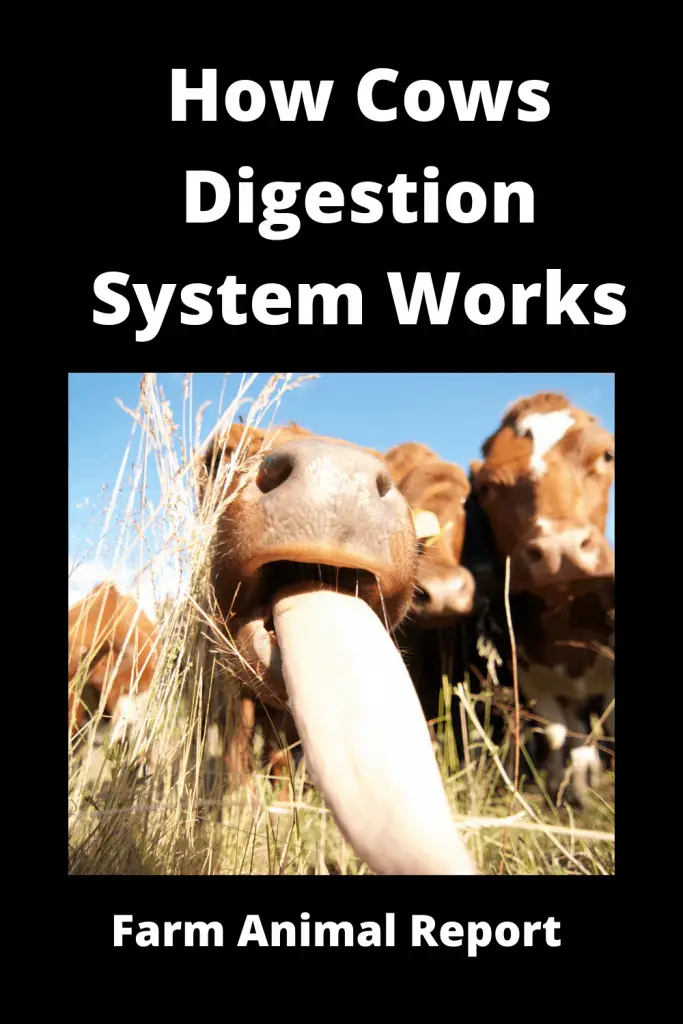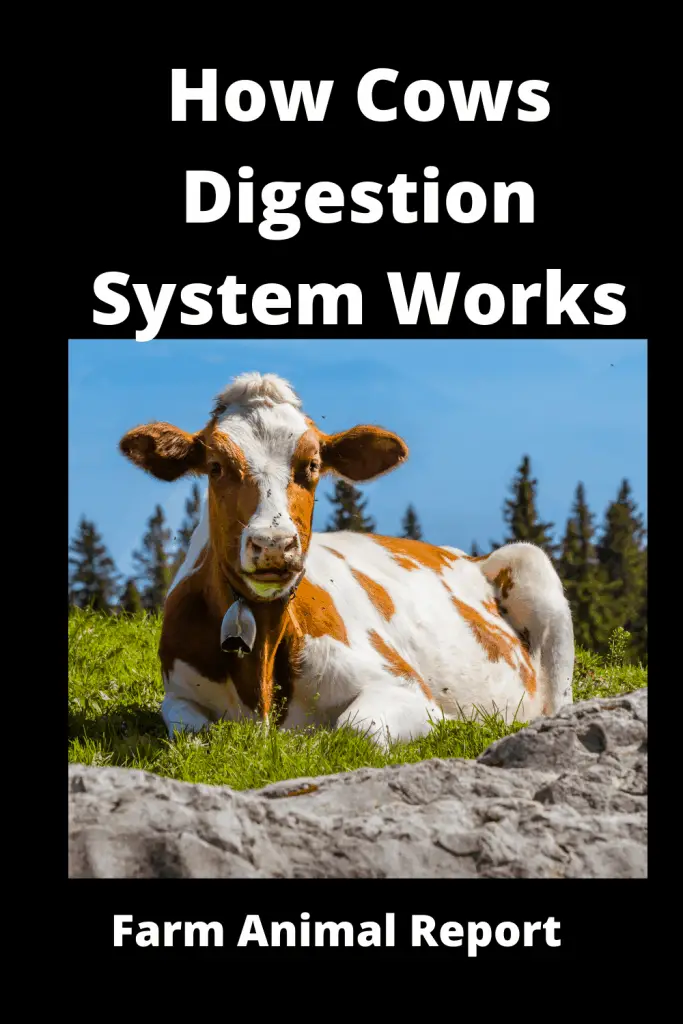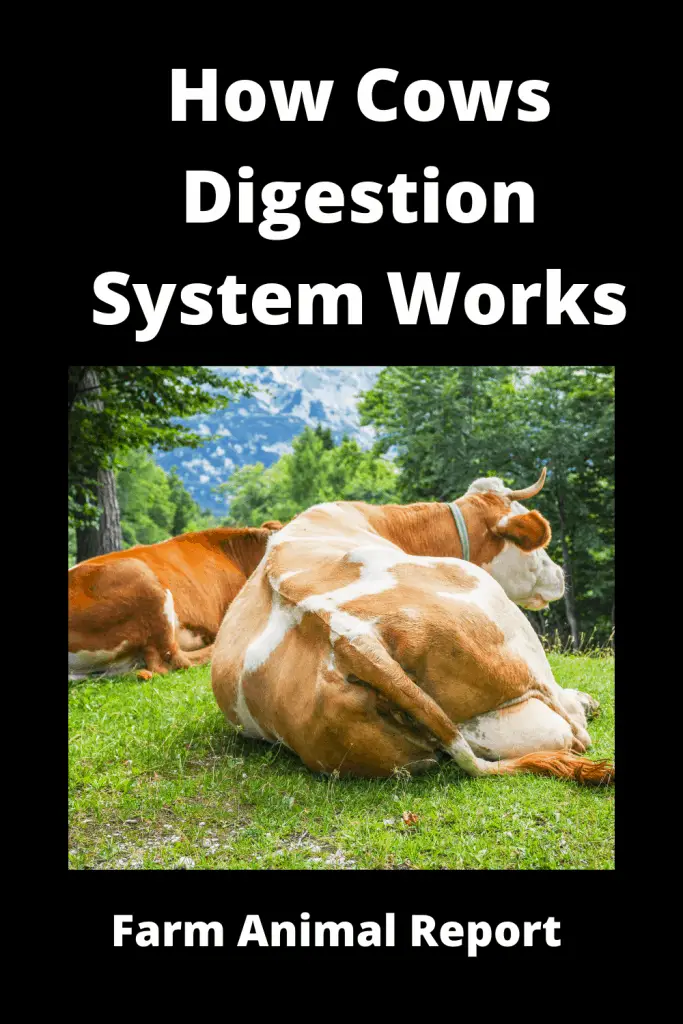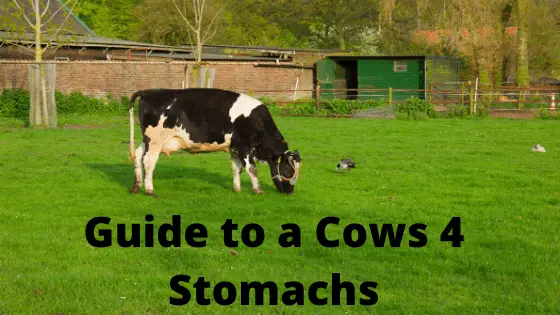How Cows Digestion System Works
How the cow’s digestive system is different than other Grain Feeding Animals?
How Cows Digestion System Works. The cow’s digestive system is different than other animals because the cow has four stomachs while other animals have a single stomach and known as monogastric animals. In a cow’s digestive system, the major portion of the cow’s stomach is rumen and it plays an important in the cow’s digestion.
The cow’s digestive system consists of the following.
- Mouth
- Esophagus
- A four-compartment stomach, which includes:
- The rumen
- The reticulum
- The omasum
- The abomasums
- Small intestine
- Large intestine
What is the function of the mouth and esophagus in the cow’s digestive system?
1. Cows Mouth:
The first part of the cow’s digestive system is the mouth which plays an important role in digestion. The mouth is where the process begins. Cattle will graze by wrapping their tongues around plants and tearing, pulling them into their mouth for mastication / Chewing.
They chew first with the lower jaw incisors, working against a hard dental pad on the front part upper palate, the second with the molars, grinding plant material down further.
Chewing stimulates saliva production and the saliva mixes with plant matter before the animal swallows. Saliva contains enzymes capable of breaking down fats and starches and helps to buffer the pH levels in the reticulum and rumen segments of the stomach. Mature cattle will
swallow from 50 to 80 quarts saliva daily to aid in digestion, but the amount varies based on how much time they spend chewing.

See Our Guide – Ways to Make Money Cattle Farming
2. Cows Esophagus:
The second part of the cow’s digestive system is the esophagus. When the cow swallows the plant’s material and saliva mix, it will travel down the esophagus to the rumen.
The esophagus performs the swallowing action through waves of muscle contractions, moving the feed down. It has a bidirectional function, meaning it can move feed from the mouth to the stomach or from the stomach to the mouth.
The cow needs the latter to regurgitate “cud,” or the under-chewed plant matter and grain, back up to the mouth for further grinding. Once the cow is finished chewing, it again swallows the matter back down to the stomach.
3. The Four Compartment-Stomach of a Cow
The 3rd part of the cow’s digestive system is four compartment-stomach. Among this four-compartment, the rumen plays an important role in digestion.
1. Cattle Rumen:
What is the role of the Rumen in the Cow’s Digestive system:
The rumen is the largest, with a volume of 150-200 liters.
In cow’s digestive system there are billions of microorganisms. They help the cow to digest and utilize nutrients in the feed. To achieve efficient feed utilization and high milk yield, the bacteria must have optimal conditions.
It is the bacteria that digest the feed. Feeding a cow, in fact, involves feeding the microorganisms in her rumen.
The process of fermentation takes place in the rumen and the reticulum. Fermentation is when microorganisms convert carbohydrates into volatile fatty acids and gases. This process allows the cow to convert cellulosic fiber into energy.
How the Cow Gets Energy while Feeding Digestion in the Rumen?
Rumen microbes digest simple and complex carbohydrates(fiber) and convert them into VAFs. VAFs mainly consist of acetic, propionic and butyric acids and provide 50 to 60 percent of cow’s energy.
Diet can affect the amounts of each VFA microbes produce.
- High forage diets result in more acetic acid-forming( 60 to 70% of total) than propionic acid(15 to 20 percent) and butyric acids ( 5 to 15%).
- More grain or finely ground forages can cause the amount of acetic acid to decline to 40 percent, while the amount of propionic acid may increase to 40 percent.
Such changes in VFA production usually relate to a reduction in milk fat test.
Microbes digest about 30 to 50 percent of the fiber units, cellulose, and hemicelluloses, in the rumen. Sixty percent or more of the starch is degraded depending on the amount fed and how fast ingested materials move through the rumen. Most sugars get completely digested within the rumen.
VAFs absorb into the bloodstream from the rumen and move to the body tissues including the udder. Once in the tissues, the cow uses VAFs as a source of energy for
- Maintenance
- Growth
- Reproduction
- Milk production.
What is the Fate of Protein and Non-protein in the Rumen of Cow’s Digestive System?
Not all consumed proteins get broken down in the rumen. Through fermentation, protein is converted to ammonia, organic acids, amino acids, and other products. About 40 to 75 percent of the natural protein in feed gets broken down.
The amount of breakdown depends on many factors including:
- The ability of the protein to dissolve.
- How resistant the protein is to breakdown.
- How fast the feed passes through the rumen.
Aside from protein breakdown, non-protein nitrogen (NPN) sources also provide ammonia. NPN sources include urea, ammonium salts, nitrates, and other compounds.
Many rumen microbes need ammonia to grow and build protein. Rumen microbes convert ammonia and organic acids into amino acids to use for building protein.
Most of the extra ammonia absorbs into the bloodstream from the rumen. But small amounts may pass into the lower digestive tract and absorb there. Feed protein ( not broken down in the rumen) and microbial protein pass to the abomasums and small intestine for digestion and absorption.

How Many Types of Vitamins Produce in the Rumen?
Rumen microbes make vitamin K and all B vitamins. Microbes make enough of these vitamins for cattle growth and maintenance. Thus, under most conditions, cattle with healthy rumens don’t need added B vitamins or vitamin K in their diet.
Cow under stress may need added niacin(B3) and thiamine (B1).
How Fat Digestion Occurs in the Rumen?
Most fat digestion and absorption occur in the small intestine. Cows absorb more saturated fat than simple stomach animals. This is because rumen microbes change unsaturated fatty acids to saturated fatty acids by adding hydrogen molecules. Feeding a lot of unsaturated fatty acids can be a toxin to rumen bacteria, slow fiber digestion, and lower rumen pH.
What is Cow Belching?
Belching Of gases produced within the rumen during fermentation(500-1500 liters per day) ( 150-400 gallons), 20-40% consists of methane and carbon dioxide. Production of fermentation gases represents a considerable energy loss.
Certain fermentation modifiers, such as ionophores, improve the energy efficiency of ruminants by reducing those gas energy losses.
The fermentation gases are expelled by belching. When belching is impossible or ineffective, the cow can suffer from bloat.

What is the passage of feedstuffs through the digestive tract in the cow’s digestive system?
There are following passage of feedstuffs in the cow’s digestive system:
Cows Rumination and Saliva:
The cow chews feed almost without any sorting, which makes her different from other animals, such as pigs. After a short period of mastication, when saliva is added, the feed is swallowed in the shape of a bolus. When the cow ruminates, feed returns back to the mouth and is masticated again. Most of the reduction of feed particles occurs during the rumination process.
What is Mastication:
The process of grinding enlarges the surface area of the feedstuff. This greater surface area helps the ruminal microorganisms and digestive juices to break the feedstuff down.
How Much Cow Saliva
During mastication, large amounts of saliva are added.
A cow produces between 40 and 150 liters(10-45 gallons) of saliva per day, depending on the feed she receives. Roughage has the effect of increasing rumination activity, whereas concentrates reduce it.
Saliva has two functions:
· Buffering:
Saliva, with a pH value of approximately 8.2 and a high sodium bicarbonate level, has a buffering effect in the rumen. This means that the saliva helps to counteract the effects of acid-producing feedstuffs, such as cereals, molasses, potatoes, and fodder beets, on the ruminal pH.
· Suppressing foam:
Saliva can reduce the risk of bloat as it also has a foam suppressing effect in the rumen.
What is the PH in The Rumen
The ideal rumen pH value is between 6 and 7. The ruminal microorganisms are healthiest within this range. If the pH value varies too much, some types of micro-organisms that digest cellulose( hay, silage, etc.) are unable to grow or ferment cellulose with a pH drop below 6, the rumen is considered to be acidotic. Ruminal acidosis can be acute with a rapid, severe drop in pH.
More common in high producing herds is sub-clinical acidosis which is characterized by chronic, intermittent periods of low ruminal pH.
2. Cows Reticulum:
What is the reticulum?
The reticulum, with its honeycomb-like lining, is a compartment of the stomach that is involved with rumination.
How Reticulum plays the role of Rumination in the Cow’s Digestive System?
The cow’s rumen is like a large fermentation vat. More than 200 different bacteria and 20 types of protozoa help the cow to utilize fibrous feedstuffs and non-protein nitrogen sources.
When the feed enters the rumen it is layered upon the rumen mat which floats upon the top of the rumen contents. Through rhythmic contractions of the ruminal wall, the freshly eaten material accumulates at the rear area of the mat. The rumen mat consists of non-digested material with a 15% dry matter content. Bacteria adhere to the feed and gradually digest the fermentable material.
When the cow ruminates, cuds from the front layer are eructed. Saliva is added in the mouth and through the grinding action of the teeth, the surfaces exposed to micro-organisms become larger.
The feed particles become smaller as the bacteria work and the rumination process continues. They gradually absorb fluid and sink to the bottom of the reticulo-rumen have a dry matter content of 5%.
The rumen contracts once every minute. The contractions allow the mixing of the fluid and solid contents in the rumen to stimulate fermentation and avoid stagnation.
Contractions also serve to release gases trapped in either the mat or fluid portion of the ruminal contents. The fermentation gases are then released by belching. Disruption of this process can result in bloat.
Feed particles of the correct size and density are segregated into the fluid in the reticulum by the ruminal contractions. Subsequent contractions force these particles and some of the fluid contents out of the reticulo-rumen and into the omasum.
The rumen and reticulum are basically one compartment, but with different functions. While much of fermentative action occurs in the rumen, the reticulum serves as a staging area for passage into the omasum or regurgitation.
3. Cows Omasum:
What is the role of Omasum in the Cow’s Digestive System?
The omasum is also known as “the book” or many piles because of its many leaf-like folds. It functions as the gateway to the abomasums, filtering large particles back to the reticulorumen and allowing fine particles and fluid to be passed to the abomasums.
Through the complete function of this compartment is unknown, it does aid in water resorption and recycling of buffers for the saliva. The omasum may also absorb some volatile fatty acid(VFAs).
4. The Cows Abomasum:
What is the role of the Abomasum in the Cow’s Digestive System?
The abomasum is also known as the “true stomach”. It functions much like the human stomach producing acid and some enzymes to start protein digestion. Animals that go off feed or have acidosis can develop a displaced abomasum or “twisted stomach.” The abomasum will actually float out of place and become torsioned stopping the flow of digesta.
5. Cows Small Intestine:
How small intestine helps in digestion in the cow’s digestive system?
Digesta that leaves the rumen and enters the small intestine includes some microbes and undigested fiber, as well as protein, and some sugars produced by the microbes. By-pass protein, fat, and carbohydrates also enter the lower digestive tract.
By-pass protein, fat, and carbohydrates are nutrients that can’t be digested in the rumen but may be digested in the abomasum and small intestine.
Enzymes to digest proteins, sugar, and starch flow into the small intestine from the pancreas, while the gall bladder produces bile to help digest fats. The small intestine also produces bile to help digest fats.
The small intestine also produces enzymes to aid in digestion, but its major function is the absorption of digested nutrients. Except for the volatile fatty acids, most of the nutrients are absorbed in the small intestine including protein, starch, fats, minerals, and vitamins.
6. Cows Large Intestine:
How large intestine helps in digestion in the cow’s digestive system?
Water is primarily absorbed in the large intestine. Undigested feed, some excess water, and some metabolic wastes leave the large intestine as fecal material. The consistency of manure is an indicator of animal health and is dependent on water, fiber, and protein content of the feed.
For example, cattle on lush spring forage will have profuse watery, greenish colored manure, whereas animals on a hay diet will have firm manure that is dark in color. Animals should produce manure that indicates a digestive upset or disease. Light-colored manure, manure tinged with blood, and watery manure are not normal situations. Manure should not smell putrid or rancid. Producers should recognize changes in manure that indicate problems.
Complications of the Cow’s Digestive System?
There are the following types of complications may occur in a cow’s digestive system.
1. Hardware disease:
Reticulum acts as a trap for foreign objects ingested by the cow. It is not unusual to find rocks, nails, and wire or metal puncture the side of the reticulum, it can cause “hardware disease”. Hardware disease is actually irritation or infection of the diaphragm, heart or lungs.
Hardware disease is a common term used for traumatic gastritis and traumatic reticulitis. Also known as reticulupericarditis.
From 55 to 75 percent of the cattle that are slaughtered in the eastern United States have been found to have hardware in the reticulum.
What are the clinical symptoms of Hardware Disease?
There are the following symptoms of hardware disease:
- The cow has a poor appetite
- The cow will be depressed.
- The cow is reluctant to move.
- The cow is seen to have indigestion
- The cow will show signs of pain when defecating.
- The cow may also be bloated.
- If perforation of the heart has occurred, fluid, due to infection, may accumulate around the heart and produce abnormal heart sounds.
- The brisket may be quite flabby due to a large amount of fluid in it.
2. Digestive Upset:
When cow ruminates, or chew their cud, they are regurgitating a bolus of incompletely chewed feed. In order for the microbes to digest fiber rapidly and efficiently, it must be in small pieces, so cattle re-chew their food several times.
Cows also eructate or belch giving off carbon dioxide and methane. When cow “lose their cud” or stop ruminating, it is an indication that they have a digestive upset, and their rumen is not functioning properly.
3. Bloat:
Bloat is simply the buildup of gas in the rumen. This gas is produced as part of the normal process of digestion and is normally lost by belching. Bloat occurs when this loss of gas is prevented.
There are two sorts of bloat.
4. Gassy Bloat:
The least common type is gassy bloat, which occurs when the gullet is obstructed or when the animal can’t burp(such as with milk fever or tetanus).
5. Frothy Bloat:
The second type of bloat is frothy bloat, which happens as the result of a stable foam developing on the top of the rumen liquid, which blocks the release of the gas. This is by far the most common form of bloat, and unlike gassy bloat, it is highly seasonal with peaks in the spring and autumn. This is because the foam is formed by breakdown products from rapidly growing forage.
These increase the viscosity of the rumen fluid and prevent the small bubbles of gas formed by rumen fermentation from coming together to form free gas that can be belched off.
Signs of Bloat:
- The distended left abdomen is the most obvious sign usually associated with pain, discomfort, and bellowing.
- Death can occur within 15 minutes after the development of bloat.
- Gaseous bloat is usually seen in one or two animals. Frothy bloat can affect up to 25% of cases.
6. Displaced Abomasum in the Cow:
Displaced abomasum in cow occurs when the abomasum, also known as the true stomach, which typically resides on the floor of the abdomen, fills with gas and rises to the top of the abdomen, where it is said to be “displaced”.
When the abomasum moves from its natural position it prevents the natural passage of gas and the feed through the digestive system, creating a restriction. Ruminate require this specialized digestive system in order to properly process and break down their high fiber and cellulose-rich diets.
As this type of digestive system is quite complex it is at a greater risk for incidence. Due to the natural anatomy of cattle, it is more common to have the abomasum displace to the left, known as a left-displaced abomasum, than to the right, right-displaced abomasum.
When the abomasum becomes displaced there also becomes a chance of an abomasal volvulus, twist, developing.
An abomasal volvulus occurs when the abomasum, which is already out of place, will rotate and cut off blood and nutrient supply to the abomasum.
Clinical signs of Abomasal Displacement:
- Loss of appetite
- Dehydration
- The decline in milk production
- Mild diarrhea
- Change in coat texture.
Prevention and Treatment
How can we prevent our cow from hardware disease?
Cow commonly swallow foreign objects, such as nails and wire, found in the field or their feed. These objects do not always cause problems, but they can cause a disease commonly known as hardware disease.
There is the following way for prevention of hardware disease:
- The most important step in prevention is to keep wire and metal objects out of feed. Feed-delivery systems should have magnets on conveyer belts to capture metal. And feed conveyers should be checked frequently to make sure their magnets are clear and able to operate.
- In addition, work to keep hayfields as “clean” as possible. And, be careful when swathing or baling along a fence that might have broken wires out in the field that a swather or baler might chop up.
Treatments we can Give to our Cows?
- In general, the prognosis is very poor with this condition. In the early stages of a reticuloperitonitis, a long course of antibiotics may help to wall off the infection and the cow may continue in production.
- Similarly, surgical removal of wire in the early stages of the disease, together with antibiotics such as penicillin or amoxicillin, may occasionally have a successful outcome.
- Specifically designed magnets may be given as boluses to the cow with suspected hardware disease in order to try to trap the foreign body and prevent it from migrating through the stomach wall.
How can we Prevent our Cow From Bloat?
It is much more effective to prevent bloat than treat affected animals. Management and planning can significantly reduce the number of cases.
To Prevent Frothy Bloat:
- If possible avoid using high-risk pastures at high-risk times. Pastures with a history of bloat problems or with a high clover content should not be used for cows soon after turnout.
- Stagger turnout with buffer feeding as this will allow the rumen to adapt to the new diet.
- Administer anti-foaming agents daily if bloat is a severe problem. If this is the case and you can strip graze then spraying antifoaming oil onto the grass can significantly reduce labor costs.
What kind of Treatment we can give for Curing Bloat?
- Passing a stomach tube is the best treatment for gassy bloat. Once the gas has been released, the cause of the obstruction should be looked for.
- In a few cases, a trochar and cannula punched through the side into the rumen will relieve gassy bloat when the stomach tube has not worked.
- For frothy bloat, antifoaming agents that disperse the foam should be given by stomach tube. Old-fashioned remedies such as linseed oil and turpentine are effective but newer treatments such as dimethiocone or polaxolene are easier to gives as the effective dose is much smaller.
How can we Manage the Feed for our Cow?
Healthy rumen = Healthy Cow
Although proper nutrition and cow health go beyond taking care of the rumen microbes, reducing digestive problems and promoting a rumen with a healthy microbes population can prevent may serious problems in a cow. The following are some rules for maintaining rumen health.
- Provide a diet that meets the energy, protein and mineral requirements of the animal.
- Make sure water is clean and available.
- Pay attention to fiber levels in the diet; a fiber level between 30% and 70% is preferred.
- Switch from high fiber diets to high grain diets slowly; change should occur gradually over days or weeks.
- Diet should contain 5% or less fat.
- Changing from a high grain diet to a high fiber diet will generally not cause digestive upset, but will reduce performance.
- Do not move hungry or newly received cow into the pastures containing a high percentage of legumes.
- Do not introduce cow to high percentage legume pasture when pastures are wet.
- Supply cow grazing pasture containing more than 50% legumes with ionophores or poloxolene.
- Monitor rumination and fecal output to aid in the early detection of digestive problems.
- Use DCP in the lactating cow for completing the calcium level.
- May use soda bicarbonate for removing acidosis in the rumen.
World Cattle Breeder Associations
| Cattle Association | Location | Link |
|---|---|---|
| National Cattleman's Beef Associations | United States | NCBA |
| United States Cattlemans Association | United States | USCA |
| Ohio Cattlemans Association | Ohio | OCA |
| American Angus Association | United States | AAA |
| United Kingdom Cattle Associations | UK | UKCA |
| Australia Cattle Associations | Australia | ACA |


